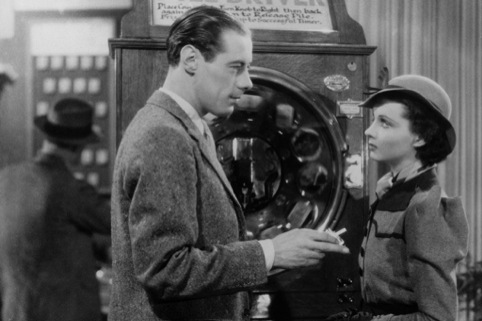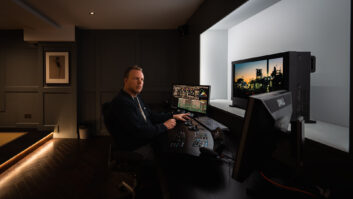
There may only be a decade between the periods, but the restoration tools and techniques needed to successfully restore content from 1920s and 1930s to today’s digital formats vary widely. Elsie Crampton reports.
The early 1900s was a groundbreaking time to be in the film industry with full-length features becoming an accessible international pastime with the emergence of the first urban cinemas, aptly named Picture Palaces.
The 1920s and 30s were particular turning points in motion picture history and restoring content from these periods is both an educational and exciting experience, opening the film to a whole new generation of viewers in the 21st Century.
A hazardous process
As with all restoration projects, the first step in restoring a film back to its former glory is preparing, cleaning and scanning the components before any significant work is undertaken. However, restoring both 1920s and 1930s film has some serious hazards, including fire, film damage, decomposition and even respiratory issues due to the pre 1950s nitrate film.
Before the introduction of safe storage solutions, film was stored on a cellulose nitrate base, which is a highly delicate and flammable material. The film was known to erode over time causing scratches, discoloration and blistering. In optimal conditions, film needs to be stored in a cool, well-ventilated and dry area and ideally be as close to the original as possible. If this is not possible a search is required to find all remaining prints, negatives and copies among the world’s vast archive collections.
Evolutions in technology
The evolution of digital technologies means that after the initial sourcing and cleaning process has been undertaken, the majority of the restoration process can be conducted by scanning and converting the film in to HD digital imagery, after which any damage or scratching can be removed.
As sound was only introduced late in the 1920s, it is important for the restoration team to gather as much information as possible about the context as well the format the film was produced on. Silent films also have one key differentiator from 1930s movies – intertitles – a crucial narration element of silent films used to portray character dialogue between footage.
Understanding the frame speed is also important to pull together a seamless and full narrative as distributors would have ‘stretch-printed’ them each time a print was made: that is, repeating an individual frame a number of times to ensure the title appears on screen for the right amount of time before the next scene. Therefore the restoration process involves cleaning up the intertitles, ensuring they are the appropriate length before reinserting in to the film digitally.
However, 1920s film was never truly silent with a musical accompaniment playing through out the picture. To reinsert this vital component those restoring film work with composers and audio specialists to replicate the exact score, altering it at the correct intervals and scene changes from beginning to end.
Re-discovering the Golden Age
Furthermore, restoring 1920s film can sometimes result in a few welcome surprises: over time frames are often lost and characters forgotten. However, during the early stages, buried scenes and abandoned narrative can be uncovered creating a whole new viewing experience for today’s audiences.
The 1930s are often termed the Golden Age of Hollywood, with colour and sound innovations altering the cinematic landscape. Coloured film from this era often needs to be painstakingly restored to it original vibrancy with long-term storage often tinting or darkening the colour.
Vivian Leigh, the iconic British actress, is a perfect example of classic films that required restoration. The trio of films shot between 1937 – 1938 were all victims of nitrate film and were therefore in dire need of a helping hand. Having been stored in the BFI archive, the nitrate elements featured distortion and instability, requiring an extensive restoration process to restore the collection in a new HD format.
A Prime example
When compared to more modern restoration projects the processes involved are time consuming and intensive. Prime Suspect, the award winning British television series that aired from 1991-2006 is another classic that required restoration.
Although a well-known series, the drama was originally shot on 16mm and more significantly in a number of different formats that don’t naturally marry with modern television display. However by using restoration-specific tools such as the ArriScan, Pandora Revolution, PF Clean, AfterFX Relativity and infer-red dirt maps, all seven series were restored to their former glory and still enjoyed today. This process varies dramatically to the sometimes dangerous projects of the 1920s and 30s, where audio and imagery are often difficult to integrate and not readily available.
Bringing film to life
Each restoration project requires new techniques and workflows, making each project unique. Restoration of any sort is worthwhile and whilst these are only the initial steps taken, restoring film from these eras reveals the history and context of cinema in a way never seen before. Younger audiences are able to not only view film classics, but in a HD format, bringing the colour and story to life, perhaps even more then when it was originally shown.







